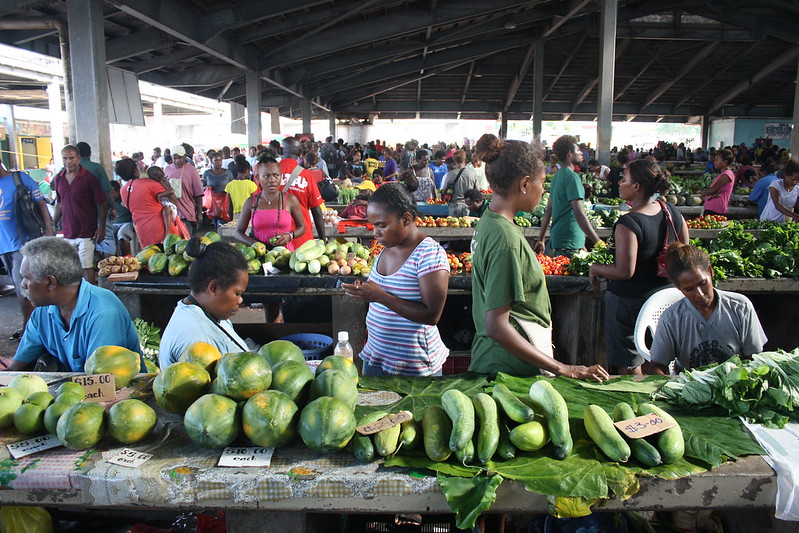Solomon Islands Renewable Energy Loan
 The Solomon Islands, a Pacific nation made up of volcanic islands and atolls, faces ongoing development challenges. Once a British protectorate, it gained independence in 1978 and joined the Commonwealth as a parliamentary democracy. In 2000, a coup destabilized the country’s economy and the effects are still visible at the moment, particularly in the underdeveloped infrastructure and a high poverty rate.
The Solomon Islands, a Pacific nation made up of volcanic islands and atolls, faces ongoing development challenges. Once a British protectorate, it gained independence in 1978 and joined the Commonwealth as a parliamentary democracy. In 2000, a coup destabilized the country’s economy and the effects are still visible at the moment, particularly in the underdeveloped infrastructure and a high poverty rate.
The Solomon Islands’ Financial Situation
The Solomon Islands have a population of about 800,000 people, spread across 90 islands that span more than 600,000 square miles of ocean. About 75% of the population lives in rural areas, making it expensive and logistically difficult to deliver public services and infrastructure beyond the capital, Honiara. This limited infrastructure contributes to one of the highest electricity costs in the world. Power is unreliable and the country depends heavily on imported fuel, further inflating energy prices. These ongoing challenges have deterred local and foreign investment, limiting economic growth.
The labor market reflects this structural weakness. Only 10% of the workforce is employed in industry, while a significant majority works in agriculture. Most of this agricultural output is noncommercial and geared toward food security and subsistence livelihoods in rural communities. Although the official unemployment rate is low at 1.6%, underemployment and informal labor remain high due to the limited availability of formal job opportunities. These factors contribute to the Solomon Islands’ relatively high poverty rate of 25.1%.
The Saudi Fund for Development
Established in 1974, the Saudi Fund for Development (SFD) supports low- and middle-income countries through infrastructure and sustainable development loans. The SFD has financed more than 800 development projects in more than 100 countries and contributed $21 billion in global aid as of 2025. Its areas of support include clean energy, health, education and poverty reduction.
Solomon Islands Renewable Energy Loan
In 2025, the SFD signed a $10 million renewable energy loan agreement with the Solomon Islands, represented by Minister of Finance and Treasury Manasseh Sogavare and SFD CEO Sultan Al-Marshad. The initiative aims to build solar power plants and battery storage facilities capable of delivering 35.5 megawatts of clean energy. The project seeks to reduce the country’s dependence on imported fuel, expand rural energy access and stabilize electricity supply. These improvements are expected to lower costs, encourage local business activity and enhance digital access across islands. According to the World Bank, greater energy reliability may help attract investment and support long-term development in small island states.
Development Outcomes and Long-Term Goals
Reliable access to electricity could help stimulate economic growth, create jobs and strengthen local industries. In rural communities where employment is often limited to agriculture, expanded energy access may enable economic diversification and greater participation in the digital economy. According to the International Renewable Energy Agency, the Solomon Islands aims to achieve 100% electricity access and net-zero carbon emissions by 2050. The Saudi-backed renewable energy initiative supports these national goals by reducing costs, improving service reliability and promoting climate resilience.
Moving Forward
The Solomon Islands’ clean energy efforts highlight how strategic development financing can accelerate infrastructure growth and reduce poverty in island nations. With renewable energy technology becoming more affordable, similar projects in other low-income countries may unlock new opportunities for sustainable development.
– Amelia Dutch Player
Amelia is based in Savannah, GA, USA and focuses on Business and Technology for The Borgen Project.
Photo: Flickr
